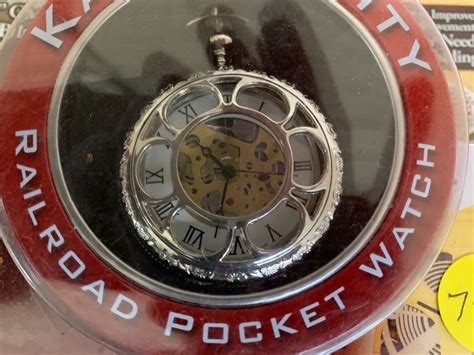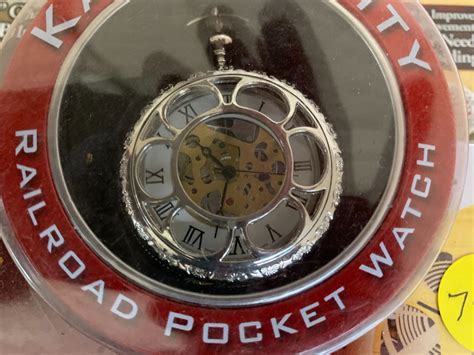What is Kansas City Pocket Watch Railroad?
Kansas City Pocket Watch Railroad was a railway company that existed during the late 1800s and early 1900s. The company was named after the city where it was headquartered - Kansas City, Missouri. While the company's main focus was on providing railway transportation services, it also had a division that specialized in manufacturing railroad pocket watches.
Kansas City Pocket Watch Railroad's watches were highly sought after by railroad employees due to their accuracy and durability. The watches were designed to withstand the demands of daily use on the railways. The company's watches were made from high-quality materials and underwent rigorous testing before being sold.
The watches produced by Kansas City Pocket Watch Railroad are now considered collectors' items due to their rarity and historical significance. In their prime, the company's watches were used by conductors and engineers to accurately time railroad schedules and operations. Today, they are prized by collectors and enthusiasts around the world.
Although the company is no longer in operation, its legacy lives on through its watches and the role it played in the development of the railway industry. Its contributions and innovations helped shape the history of transportation in America.
Frequently Asked Questions about kansas city pocket watch railroad
A railroad grade pocket watch is simply a watch that was approved by a particular railroad organization for use by engineers and conductors on their line.
Hamilton railroad watches such as this model are eagerly sought by modern collectors. Fair market value for a watch of this quality ranges from $200 for one that is not running and has condition issues to about $500 for a timepiece in excellent condition.
Unlike the cheaply made watches of the era, railroad watches were designed to keep accurate time whether they were stem up, stem down, dial up, or dial down. Moreover, they had to be able to compensate for changes in temperature and to run at the same speed whether they were fully wound or almost stopped.
Waltham, Elgin, and Hamilton successfully made the railroad pocket watches to meet these strict standards in America, and Longines and Zenith joined the market in Switzerland, as well.
Railroad watches were known as “standard” watches because they met the railroad's standards of timekeeping. Talk about a lot relying on a single piece of equipment! Timepieces were clearly an important aspect of ensuring safety for all.
For a Pocket Watch to be Railroad Grade you must be able to set watch accurately being able to stop the watch running while setting the watch. This is done by having a setting lever that you have to open the front case and pull to set the watch using the watch crown to set the time.
Railroad Pocket Watches
All antique pocket watches are not created equal. Some of the most valuable watches are railroad pocket watches because they were produced with government-required exacting standards to ensure they kept accurate time.
And that's a little bit about how you can tell what is an antique pocket watch as opposed to what might be something that's newer. And hopefully you've learned a little.
Modern track typically uses hot-rolled steel with a profile of an asymmetrical rounded I-beam. Unlike some other uses of iron and steel, railway rails are subject to very high stresses and have to be made of very high-quality steel alloy.
An official representing the Vermont Central Railroad and three other New England lines, William Raymond Lee, ordered watches and clocks in late 1853 from William Bond & Sons, Boston, the American agent for Barraud & Lund of London. The English firm delivered the first of the timepieces in January 1855.
Railroad Watch Standards Evolve
By 1920 production of 18-size railroad grade movements had ended. The constant in all of this was that railroad watches needed to maintain a standard of timekeeping of less than 30 seconds of error over a week.
Grade. The rate of rise or fall of track elevation. Grade Crossing. A crossing at the same level, either between tracks of different railways or between railway tracks and public crossings.
The true value of a pocket watch depends on a few factors. Age, rarity and brand will all affect the sale price. Chiefly, the brand name will represent most of the watch's value – good pocket watch brands can sell for several thousand pounds.
5 Characteristics of Rare Vintage Watches
- Original Dial. The dial of a watch makes up the vast majority - if not all - of its value.
- The Material. Vintage watches that are made from solid gold, platinum, and stainless steel are what are generally most desirable.
- Serial Numbers.
- Inscriptions.
- Documentation.















